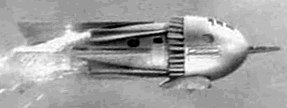

Dedicated to the Promotion and Preservation of American Muscle Cars, Dealer built Supercars and COPO cars. |
|
#11
|
|||
|
|||
|
[ QUOTE ]
-----Wayne,,,You have good taste in chassis guys. I used Mike P to do a bit of much needed work on "Red Alert" many years ago and he is one of the best. Looking at one of his full tilt Super Stock cars is like looking at a Mona Lisa in the drag race world!!!.......Bill S Hi Bill! Mike and I have been pals for a long time. If you recall the White and Blue Firebird that Mike Saye raced (and won the NHRA world championship with), that car was originally mine (and Mikes). We were partners on it wayyyyy back when. FYI, that car was originally a low mileage, GM of Canada Player's Challenger car they used to pace race events....oh well. When the $$$ ran out, we sold it to Saye. Mike is one of the good guys in the biz. Plenty of folks don't know his influence either. More than a little of the new Dodge Challenger race package is due to MPR. And I suspect, since he is pals with Brian Wolfe, he had a wee bit of influence on the CJ Mustang as well. Right now, I'm trying to track down some pix Mike took of the housing. When I find them, I'll post them. He builds art. Wayne Scraba |
|
#12
|
|||
|
|||
|
Here’s some photos of the rear axle housing (I mentioned earlier). I picked up a new 9-inch Ford housing from Mark Williams. For this application, it actually began life as a Currie piece, less the housing ends (Mark Williams usually installs his own on these housings). Going in, the plan was to narrow the housing a bit. The rationale was pretty simple: I wanted to use the smallest backspace wheel possible. Why? When I had drag cars, it was something we always did, because it provided you with the lightest wheel of the bunch (a ten-inch wide wheel with a 3.5-inch backspace is lighter than a ten-inch wide wheel with a 5.5-inch backspace), plus it makes removing the wheel a bit easier if you use drive studs (which I do use, even on this car). And one more thing: I think the deeper dish of the small backspace wheel looks better!
Sounded simple enough. So I had M-W drop ship the housing to my old racing pal, Mike Pustelny (MPR in Almont, Michigan). Little did anyone know that my request for a slightly narrowed housing would morph into such a major job. Here’s the housing as it came from Mark Williams:  It became pretty obvious that in order to narrow the housing, add Mark Williams’ big housing ends and use the stock mounting points, some major surgery would be needed. Mike sliced the lower mount like so:  Next, he installed his narrowing fixture and added the M-W housing end:  He had to piece it all together before finally welding the housing end onto the axle tubes. This wasn’t easy since the lower suspension and shock mount actually overlaps the new (huge) housing end.  Here’s how Mike welded up the housing end. I you’re a welder or even a guy who appreciates good workmanship, then I think you’ll like this photo:  Next up is a photo of how Mike finished the lower suspension and shock mount. As you can see, there was considerable work to make this whole thing work with the stock suspension mounting points and the large M-W housing end.  Another thing I wanted was a back brace on the housing. Mike and I talked about this quite a bit. He suggested instead of using a box style brace that it might be cleaner and easier on this application to use a tubular brace. The reason for bracing a Ford housing is because they tend to want to move fore and aft (flex on the ends) with big power. Here’s a couple of photos of Pustelny’s solution:   As you can see, Mike’s handiwork is exceptional. What else is neat about the bracing job is the fact he never really bitched about all of the trouble. The job took a lot (a Lot) longer than anyone ever imagined, and I suspect he could have been well on his way to fabricating a complete Super Stock housing in the amount of time he spent fidgeting with this piece.    In addition to these mods, the housing also received a large inspection/filler bung over the ring gear “hump” along with a magnetic drain plug on the bottom. Once all of those things were done (and after the anti-roll bar was installed out here on the west coast), the housing was powder coated black and assembled with one of Mark Williams’ Pro Street center sections and a 35-spline Pro Street axles. I used one of the billet steel Lockers inside the aluminum through bolt 9-inch along with 3.89:1 gears. M-W set it up and it too is a really, really nice piece. He even goes as far as safety wiring the ring gear bolts on. Whew. Sometimes I think building a dedicated race car would have have been a whole bunch easier. And cheaper <g>. Wayne Scraba |
|
#13
|
|||
|
|||
|
Wayne.......Your Attention to detail is second to none.....All I can say is WOW!!!!
Ken    
__________________
 The Best things in life......Aren't Things |
|
#14
|
|||
|
|||
|
Thats just bitchin !!!!!!!!
__________________
1985 Monte Carlo SS 1986 Monte Carlo SS |
|
#15
|
|||
|
|||
|
Wow. Thanks guys. And hey Ken... your comment is one of the highest compliments anyone can get, considering the absolutely stunning level you build your cars to! Yeow!
Again, thanks. If I don't step on any toes, maybe I'll post some more on Buford. I have some "before" engine compartment shots. It's amazing how much stuff GM packed into those things. The production line (factory) wiring harness alone has to rival Rubik's cube <g> Right now I'm working on the instrument cluster. It's pretty cool. Wayne Scraba  |
|
#16
|
|||
|
|||
|
In my last post, I said I'd get some "before" pix posted. In hindsight, I should have done this earlier. Anyway, the first photo is of Buford the Buick sitting at the boat launch in Cowichan Bay, BC. I live on Vancouver Island on the far (far) west end of Canada. "Cow Bay" is a quaint little fishing/tourist village on the south east coast of the island. I lived in the area (Cobble Hill) for a few years before moving to the real backwoods <g>. Where I live now supposedly has more black bears than anywhere else in North America. They're not kidding. And all of 'em must live in my backyard! Back to the Buick:
 That same day, I pressure washed the engine compartment as much as I could stand, and then ran the car into my old shop. This is a photo I took after an hour or two of peeling stuff out. It's pretty clear here and in several of the following photos that I didn't pressure wash the thing nearly enough!  At this point, I had the engine and turbo 200 out of the car. Take a look at the crossmember. There was no chance this thing would ever, ever rust <g>. Aside from the oil and grease, the original owner had the car undercoated with that wax-oil stuff. It was wicked to clean with a capital "W". I don't have a photo of the trans tunnel, but that was the worst part. Message to self: You love laying under the car with the pressure washer set on "high". In the process of cleaning up the grease, I literally wore out a dozen brushes of all sorts. Walmart and made-in-China brushes wanted to be my friends.  In the process, I tackled the AC/heater box removal. That thing is the size of a house. Or maybe a Smart Car. I eventually decided that the inner skirts had to come out in order to clean up the mess. I should have removed them before I pulled out the AC/heater box. It would have been a whole bunch simpler. Hindsight is a wonderful teacher ain’t it?   Here's a photo of the car after the scrubbing and pressure washing was more or less complete. You can see how the paint came right off the frame. I used a considerable amount of spray on engine degreaser. For the tough stuff, I'd resort to brake cleaner and hot water hooked directly to the pressure washer. I don't have a lift, so the underneath part of the equation was miserable.  Once that was done (and I'll be the first to admit the cleaning process took weeks of my spare time instead of days), I stripped out almost everything from the engine compartment and masked/taped what little remained. Then I sprayed it with semi-gloss black. I found a near match to the Buick offset too: It's paint for a John Deere tractor. They have two different glosses (one is called "Blitz Black"). One matches the firewall perfectly and the other seems right for the frame. I can't take credit for finding Blitz Black (rattle cans or bulk). The street rodders discovered it long before me. The parts guy at the John Deere dealership I bought it from told me he can't believe how much of the stuff he sells. He didn't know why. I didn't tell him <g>. Oh. See the Moroso frame mounts? I didn't miss a bolt. That's how they're installed. One mount fits both sides of the car and that's where the extra unused hole comes from.   So that's how the project actually began. While this was going on, Mike Pustelny was busy making sparks fly on the rear end housing. Meanwhile, I was melting my credit card ordering parts <g>. Down the road, I'll round up some photos of how the frame was notched. That too turned into a great fab job – this time by an outfit that specializes in some (super) nicely turned out sprint cars here on the Island. I definitely would have used MPR's services for this job too, but his shop and mine are 2597.33 miles (and one ferry ride) apart. I hope you folks find this a wee bit interesting. Wayne Scraba |
|
#17
|
|||
|
|||
|
A few of the reasons I chose to build a Regal was because it (along with other G-Bodies) was the last of the mid size rear wheel drive platforms from General Motors, it has a full (albeit a wee bit flimsy) frame, it has a relatively spacious engine compartments that can swallow any Chevy engine, plus there's a ton of aftermarket support for them and they tend to be (relatively) easy to work on. Additionally, I really like the way you sit in the car when you drive them. And from an aesthetic perspective, I personally dig the looks of the T-Type over the other G-Bodies.
Bliss. Right? Maybe not. The trouble is, room is limited out back for big sticky tires. Typically, the most street tire these things can accommodate is in the range of a P275-60R15 skin. And if you run slicks, a 9.00X28.00-inch hoop is the biggest you can get away with (and that might be a stretch). Even with those two tire examples, you’re almost always forced to jack the back end up to gain clearance. The reason is, the leading and trailing edges of the frame rail (closest to the back of the door jamb and closest to the bumper) are tight to the tire. The gentle factory frame notch simply limits the amount of tire you can fit, even though there’s plenty of room in the OEM wheel well. There's another catch when you jack up the back end of a car like this: If you raise it excessively, you mess with the geometry of the back suspension. The factory 4-link instant center location is changed and typically, the car will be a handful to hook. The solution is simple: Notch the frame. Sounds simple enough, but if it isn't done correctly, it can turn ugly, simply because the factory frame isn't the strongest piece in the world. The truth is, the frame has to be carefully notched, then reassembled (plated) with fresh material and reinforced (with a crossmember) so that it doesn't droop or bend following the surgery. Once notched though, a car like Buford can swallow tires right up to P325-50R15’s or 11.5X28.00-inch slicks, using the stock inner wheel well (tub). Best of all, this is all accomplished at stock (or close to stock) ride height which means the suspension geometry isn't screwed up. I had Lejeune Performance (Victoria, BC) notch the frame on Buford. The Lejeune shop primarily builds bad to the bone sprint cars, but they had an opening in their schedule, so that’s where Buford went for surgery. The lowest 1/2-inch to 1.00-inch of the inner wheel well (tub) where it meets the frame is actually a sheetmetal lip. At various spots, that lip tends to flare out to meet the outside of the frame rail. Clearance is made with a big hammer, as shown here. Deter (one of the owners of Lejeune Performance, and a rather accomplished sprint car pilot) warmed the innner a bit, then whacked it several times to get it into shape. It really doesn't require a huge amount of hammer clearancing.  Here's how the frame was cut. Deter used a 4.5-inch angle grinder with a cut off disc for this part of the surgery. The frame rail was cut back to just past the factory seam.  When Deter finished the side and bottom cuts on the frame rail, he turned his attention to the top. Here, a torch was used to cut it out. Once the rough cuts were done, the notch was detailed with a grinder.  At this point, Deter fabbed a pattern, using good old fashioned cardboard as the basis. He laid it out, then tapped a hammer around the edges on the frame cut to get an exact match.  The cardboard template was cut out, laid on 0.250-inch mild steel plate and traced. Company founder, Russ Lejeune cut out the frame boxing plates. Russ sold the business but still keeps his hands busy a few days a week.  Next, Deter fit the boxing plates into each frame rail. There's a good sized gap at the front and back. That gap is pretty much the width the frame has been notched. Small filler pieces were fabricated to fit the gaps and tacked into place, and then finally, everything was welded up.  I had a set of gussets welded to the frame rail at the lower trailing arm mount. These boxed gusset plates are manufactured by HR PartsNStuff. High horsepower G-Bodies regularly rip the trailing arm right out of the car at this point (no kidding). Additionally, I added a set of bolt-in tubular braces from AutoFab race cars (you can see them in the second photo). These braces tie the lower (forward) trailing arm mount to the upper (forward) mount, which greatly enhances the strength.   There was more to the reinforcement: Part of the plan was to include a big anti-roll bar from the folks at TRZ Race Cars. This anti-roll bar kit includes a beefy tubular crossmember, complete with large end plates that weld to each of the inner frame rails. While it provides a place to mount the anti-roll bar, it also does a very good job of stiffening the frame, particularly in a critical location. One more piece that really helps stiffen these cars is a back seat brace (basically a pair of diagonal braces that stiffen the body over the rear axle). Why all of the concern about bracing? Easy. If you look at some modified G-Bodies, the windshield is often cracked and the doors don’t line up. Often they'll buckle the rear quarter panels when you add power (as you can well imagine, T-top cars are even worse).  Here's the finished frame notch on the passenger side. I wanted everything to look clean and somewhat close to stock. I think it turned out pretty well.  This is the reason for the notch on each side of the frame. It allows these big M&H Racemaster P325-50RX15 Drag Radials to fit nicely in the back wheel wells. And I didn't have to jack the car up to fit them either. In fact, the back springs are stock and I run them without the upper isolators so that the ride height isn’t ridiculous (the M&H tires are definitely huge by large – I like em!).   That's it for now. I'll post some more detailed suspension and rear end photos (including the front) a bit later. Looking at the clock and the calendar, I think it's time to wish everyone here a Merry Christmas. Best of the New Year too! Cheers! Wayne Scraba  |
|
#18
|
||||
|
||||
|
looks good!!!!
__________________
Frank Szymkowski 1987 Mustang GT convertible, scarlet red/titanium, white top and white/red leather, 5 speed, 3.08, factory EQ 1969 GTO Judge Warwick blue/blue, RAIII, 4 speed, tach/gauges, safe t track, flip headlights, 3.55's, ps and radio. |
|
#19
|
|||
|
|||
|
Thank you!
Over the weekend, I'll dig up some more pix and post them. Season's Best folks! Wayne Scraba  |
|
#20
|
||||
|
||||
|
Yeah.....that is some very nice work there. I really like the gusset work on the lower control arm frame brackets. Those two very important points, often overlooked, are actually the two points where the rear axle pushes against and propels the car forward. Yeah, like I said.......pretty important! Those 1978-1988 "G"-bodies really do make good race cars. They were stamped out of such thin sheetmetal (even aluminum in places) for light weight and gas mileage, raked back windshields, rear bumpers sealed to the body to eliminate the "parachute" effect, etc. Like you mentioned Wayne, they may be full-framed, but it really is flimsy "C" channel construction! My '79 Malibu had a 540 CID with 14:1 compression, Moser 9-inch, dog-dish hubcaps, etc. It was a Suzuki Hayabusa killer that got me kicked out from the drag strip for lack of safety equipment that would have killed its' sleeper look. But anyway, it was showing a LOT of stress cracks around the body by the time I was done messing around with it.
__________________
1962 Biscayne O-21669 MKIV/M-22 1962 Bel Air Sport Coupe 409/1,000 |
 |
| Thread Tools | |
| Display Modes | |
|
|